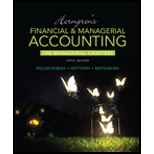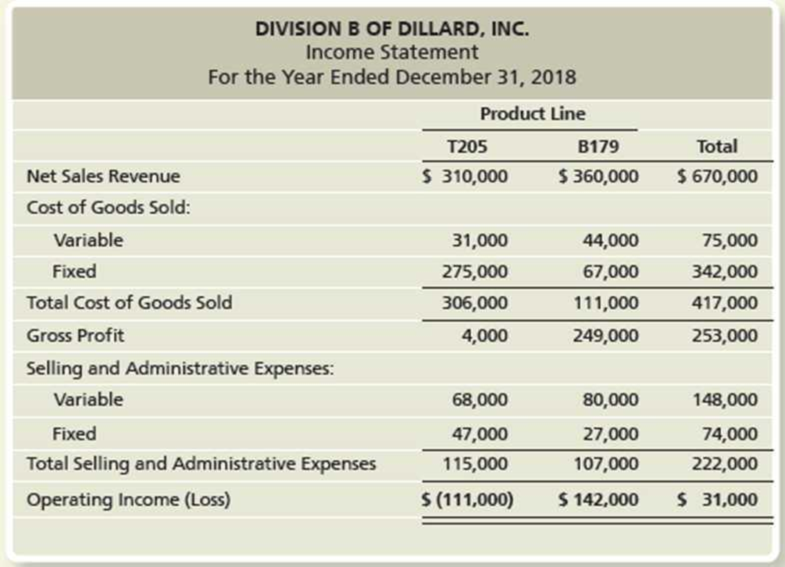
Concept explainers
Darren Dillard, majority stockholder and president of Dillard, Inc., is working with his top managers on future plans for the company. As the company’s
Requirements
- 1. Division A of Dillard, Inc. has $5,250,000 in assets. Its yearly fixed costs are $557,000, and the variable costs of its product line are $1.90 per unit. The division’s volume is currently 500,000 units. Competitors offer a similar product, at the same quality, to retailers for $4.25 each. Dillard’s management team wants to earn a 12%
return on investment on the division’s assets.- a. What is Division A’s target full product cost?
- b. Given the division’s current costs, will Division A be able to achieve its target profit?
- c. Assume Division A has identified ways to cut its variable costs to $1.75 per unit. What is its new target fixed cost? Will this decrease in variable costs allow the division to achieve its target profit?
- d. Division A is considering an aggressive advertising campaign strategy to differentiate its product from its competitors. The division does not expect volume to be affected, but it hopes to gain more control over pricing. If Division A has to spend $120,000 next year to advertise and its variable costs continue to be $1.75 per unit, what will its cost-plus price be? Do you think Division A will be able to sell its product at the cost-plus price? Why or why not?
- 2. The division manager of Division B received the following operating income data for the past year:

The manager of the division is surprised that the T205 product line is not profitable. The division accountant estimates that dropping the T205 product line will decrease fixed cost of goods sold by $75,000 and decrease fixed selling and administrative expenses by $10,000.
- a. Prepare a differential analysis to show whether Division B should drop the T205 product line.
- b. What is your recommendation to the manager of Division B?
- 3. Division C also produces two product lines. Because the division can sell all of the product it can produce, Dillard is expanding the plant and needs to decide which product line to emphasize. To make this decision, the division accountant assembled the following data:

After expansion, the factory will have a production capacity of 4,700 machine hours per month. The plant can manufacture either 40 units of K707s or 62 units of G582s per machine hour.
- a. Identify the constraining factor for Division C.
- b. Prepare an analysis to show which product line to emphasize.
- 4. Division D is considering two possible expansion plans. Plan A would expand a current product line at a cost of $8,600,000. Expected annual net
cash inflows are $1,525,000, with zero residual value at the end of 10 years. Under Plan B, Division D would begin producing a new product at a cost of $8,000,000. This plan is expected to generate net cash inflows of $1,100,000 per year for 10 years, the estimated useful life of the product line. Estimated residual value for Plan B is $980,000. Division D uses straight-linedepreciation and requires an annual return of 10%.- a. Compute the payback, the ARR, the
NPV , and the profitability index for both plans. - b. Compute the estimated
IRR of Plan A. - c. Use Excel to verify the NPV calculations in Requirement 4(a) and the actual IRR for the two plans. How does the IRR of each plan compare with the company’s required
rate of return ? - d. Division D must rank the plans and make a recommendation to Dillard’s top management team for the best plan. Which expansion plan should Division D choose? Why?
- a. Compute the payback, the ARR, the
Want to see the full answer?
Check out a sample textbook solution
Chapter 26 Solutions
Horngren's Financial & Managerial Accounting, The Managerial Chapters (6th Edition)
Additional Business Textbook Solutions
Gitman: Principl Manageri Finance_15 (15th Edition) (What's New in Finance)
Marketing: An Introduction (13th Edition)
Intermediate Accounting (2nd Edition)
Horngren's Accounting (12th Edition)
Essentials of MIS (13th Edition)
Horngren's Cost Accounting: A Managerial Emphasis (16th Edition)
- General Accountingarrow_forwardFinancial Accounting Questionarrow_forwardFlorida Kitchens produces high-end cooking ranges. The costs to manufacture and market the ranges at the company’s volume of 3,000 units per quarter are shown in the following table: Unit manufacturing costs Variable costs $ 1,440 Fixed overhead 720 Total unit manufacturing costs $ 2,160 Unit nonmanufacturing costs Variable 360 Fixed 840 Total unit nonmanufacturing costs 1,200 Total unit costs $ 3,360 The company has the capacity to produce 3,000 units per quarter and always operates at full capacity. The ranges sell for $4,000 per unit. Required: a. Florida Kitchens receives a proposal from an outside contractor, Burns Electric, who will manufacture 1,200 of the 3,000 ranges per quarter and ship them directly to Florida’s customers as orders are received from the sales office at Florida. Florida would provide the materials for the ranges, but Burns would assemble, box, and ship the ranges. The variable manufacturing costs would be…arrow_forward
 Cornerstones of Cost Management (Cornerstones Ser...AccountingISBN:9781305970663Author:Don R. Hansen, Maryanne M. MowenPublisher:Cengage Learning
Cornerstones of Cost Management (Cornerstones Ser...AccountingISBN:9781305970663Author:Don R. Hansen, Maryanne M. MowenPublisher:Cengage Learning Managerial Accounting: The Cornerstone of Busines...AccountingISBN:9781337115773Author:Maryanne M. Mowen, Don R. Hansen, Dan L. HeitgerPublisher:Cengage Learning
Managerial Accounting: The Cornerstone of Busines...AccountingISBN:9781337115773Author:Maryanne M. Mowen, Don R. Hansen, Dan L. HeitgerPublisher:Cengage Learning

